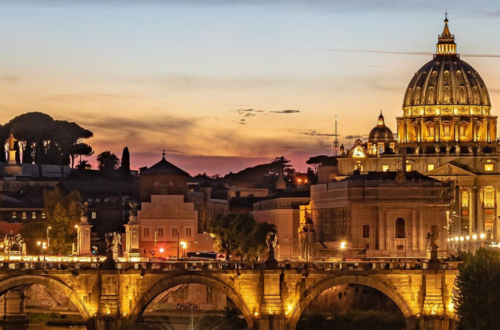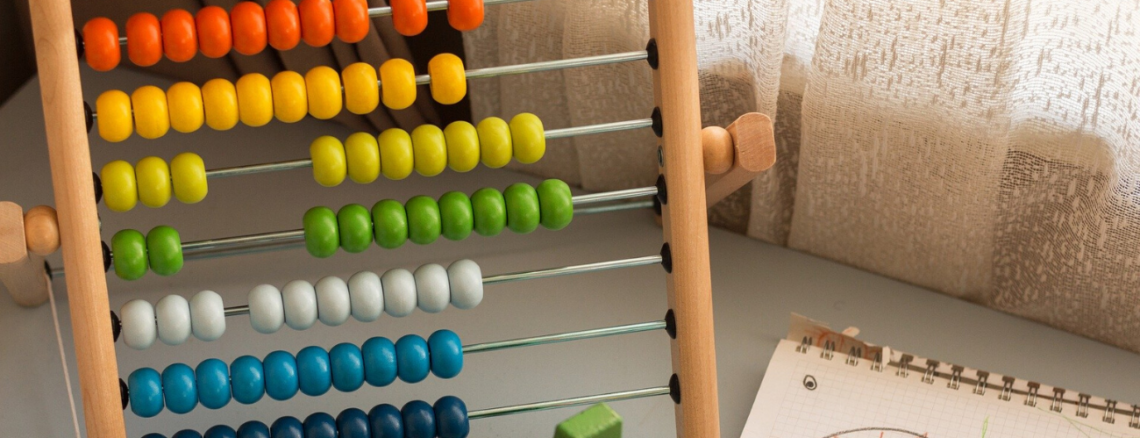-
Being Historical with Handel: Music History for Kids

When exploring music history with your kids, George Frideric Handel (1685–1759) is a great person to start with. He was a famous composer of classical music and lived during the Baroque period. (What’s the “Baroque period”? Find out here.) While he lived most of his life in England and is considered an “English” composer, he was actually born in Germany and his name is sometimes spelled “Georg Friedrich Händel.”
During the Baroque period of music history, the instruments that played classical music were slightly different from today. In Handel’s time, most of the same instruments existed, but they were made differently from how they are now. For example, a lot of woodwind and brass instruments had few or no keys. String instruments also had gut strings (instead of metal) and were played with a differently shaped bow.
If you want to learn more about the instruments that played Baroque music check out our Guide to Baroque Instruments. Today we can call Baroque instruments “period instruments” because they’re from the Baroque period. (We also call modern replicas of Baroque instruments “period instruments.”)
The piece by Handel my that son, Little M, and I want to share with you today is part of the famous piece “Water Music.” Before we dive into the music, though, here’s a short Handel biography to help you and your kids further your knowledge of music history.

Handel’s Bio
George Frideric Handel (1685–1759) was born in the city of Halle, in what is now the country of Germany. He studied music and started composing while he was still a child there. He played several instruments, including the harpsichord, organ, and violin. In about 1706 he moved to Italy, but only after working in a few different cities in Germany.
While in Italy, Handel wrote quite a bit of vocal music, including operas and oratorios. His popularity continued to grow, and in 1712 he moved to London.
Handel spent the rest of his life living and working in London–more than 40 years! He held numerous high-ranking positions as a musician there and was well known for his music. Even though Handel is probably best known for his vocal music, he also wrote a lot of great instrumental music.
During his lifetime, Handel wrote 42 operas, 25 oratorios, and a great number of other works for voices and/or instruments. (An oratorio is similar to an opera, but has a sacred subject and doesn’t have costumes or sets.) His best-known work is his oratorio Messiah, which contains the “Hallelujah Chorus,” his most famous piece.
Handel was famous and well respected during his lifetime, which is not always true for composers famous now. He was buried in Westminister Abbey in London and more than 3,000 people attended his funeral.

The Music
The music that my one-year-old, Little M, and I want to share with you today is part of Handel’s Water Music. Water Music is for orchestra and is made up of a bunch of separate movements. (A movement is a short-ish piece of music that joins together with other movements to form a larger work.)
Handel wrote the piece because King George I of England wanted to have a concert on the River Thames. It was first performed on a barge in the middle of the river! The king and his guests were actually on another barge floating in the river. The name of the piece comes from the manuscript, however, and not from the first performance venue.
This performance is by the Festspiel Orchester Göttingen, which is the orchestra that gathers for the Göttingen International Handel Festival. You can find out more about the festival on their website and listen to more music on their YouTube channel.
-
Baby Einstein Glow & Discover Light Bar Songs and Review
This post contains affiliate links. We may receive compensation (at no extra cost to you!) when you click on these links.

At Baby Loves Baroque we love toys that play classical music! The songs played by the Baby Einstein Glow & Discover Light Bar are all pieces of classical music, so we wanted to share what we think of the toy!
Reviewing the Baby Einstein Glow & Discover Light Bar Activity Station
Baby Einstein makes a whole line of musical toys (I’ll link to the full list below) and the Baby Einstein Glow & Discover Light Bar Activity Station is part of that series. The whole line seems to be great–we have both the Glow & Discover Light Bar and the Star Bright Symphony toys and my one-year-old, Little M, really likes them!
The Baby Einstein musical toys are great because they all play classical music, unlike some of the other musical toys out there. Even though the songs they play are not real recordings but are instead arrangements played by digital instrument imitations, the toys are still a great way to introduce your child to classical music.
The Toy
The Baby Einstein Glow & Discover Light Bar is a toy that does a bunch of different things. It lights up and plays music (see the complete list of all six songs below), but it also has modes for learning colors and animal names in three languages: English, Spanish, and French. You can set it on a mode to play individual musical notes when you press the buttons, or your baby can spin the rattle ball and play pieces of classical music.
Who is the toy for?
The Glow & Discover Light Bar is intended for children 3+ months. It can be a great toy for tummy time, though it might be a while before really young babies understand how the buttons work.

I think it can also be a great toy up through the toddler years because of the music it plays. It’s also engaging for the toddler age set because it can be used as a learning tool for colors and animals.
What’s So Great About the Toy
As I mentioned above, one of the best things about this toy is that it plays classical music. And it doesn’t just play really short excerpts, either–each selection is about 30 seconds. While the snippets are certainly not too long, they’re great for getting your child ready for the longer pieces of music in the classical music world. (Classical music works tend to be much longer than pop music and other genres.)
As a mom, I also love that this toy helps introduce multiple languages to Little M. Even though he doesn’t have much to say yet, I know that this is helping to make him aware of other cultures while enhancing his verbal development.
Little M also loves how the buttons light up! When the toy is on the colors mode, the lights help him associate the colors with their names (in English, Spanish, and French!).
You can check out the toy over on Amazon by clicking here ——> Baby Einstein Glow & Discover Light Bar
The Cons
There are two cons with this toy, but they’re both not a big deal.
- The stand that is supposed to hold the toy off of the ground is pretty flimsy and doesn’t do a good job.
This is not really an issue, however, because you can use the toy just fine when it’s flat on the ground. Your child can even hold it in her or his lap if they’re old enough to sit up alone. - The songs that play when the rattle ball is spun get interrupted if any other buttons are pressed.
This might even bother anyone else, but as a musician it’s kind of annoying that the songs can be stopped randomly in the middle if any other button on the toy is pressed. This isn’t really a big deal, though, just a pet peeve.
Should you buy it?
I absolutely recommend this toy! It’s got a ton of great features, isn’t too expensive, and helps to further your child’s interaction with classical music! What’s not to like?
Also, as promised above, here’s a link to all the musical toys that Baby Einstein currently makes: Musical Toys Currently Made by Baby Einstein (2020).
Click below to get the toy over on Amazon.

Songs List
Since our focus at Baby Loves Baroque is classical music, of course I have to include a list of songs and musical pieces that the toy plays! I’ve also included real recordings of each for the works; you can click on the title to take you to the video for that piece. Enjoy!
- Beethoven: The Ruins of Athens, Turkish March, Op. 113
- Rossini: Overture to William Tell: Finale
- Vivaldi: Violin Concerto No. 12 in E Major, RV 265: 1st Movement
- Schubert: Military March, D. 733
- Beethoven: Symphony No. 9, Op. 125: 4th Movement–“Ode to Joy” section
- Mozart The Magic Flute, K. 620: Papageno’s Aria, “‘Der Vogelfanger bin Ich ja”
1. Beethoven: The Ruins of Athens, Turkish March, Op. 113
2. Rossini: Overture to William Tell: Finale
3. Vivaldi: Violin Concerto No. 12 in E Major, RV 265: 1st Movement
4. Schubert: Military March, D. 733
5. Beethoven: Symphony No. 9, Op. 125: 4th Movement–“Ode to Joy” section
6. Mozart The Magic Flute, K. 620: Papageno’s Aria, “‘Der Vogelfanger bin Ich ja”
- The stand that is supposed to hold the toy off of the ground is pretty flimsy and doesn’t do a good job.








